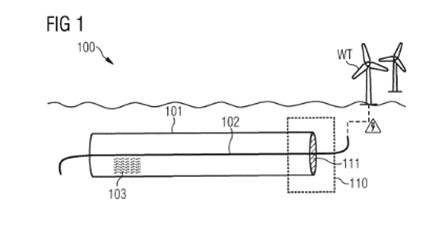A guest blog by Olivia Buckingham, Technical Assistant at Reddie & Grose, a UK and European firm of patent, trade mark and design attorneys
At a time when climate change mitigation and energy security are more critical than ever, the production of ‘low carbon’ hydrogen has been identified as a key element in the UK government’s energy security strategy. With its potential to provide a clean, homegrown source of fuel for a wide range of applications, the UK has ambitiously doubled its target for low carbon hydrogen production capacity from 5GW by 2030 to 10GW.
Patent activity related to green hydrogen
Looking at patent publications assigned the Cooperative Patent Classification (CPC) code Y02E60/36, which covers ‘hydrogen production from non-carbon containing sources, e.g., by water electrolysis’, gives us an insight into how interest in low carbon hydrogen innovation is developing.

The above graph illustrates the number of relevant publications per year from the start of 2010 to the end of 2021 (patents are published 18 months after being filed). The numbers show a 248% increase over this period of time, indicating a likely increase in R&D investment and greater confidence that the technology is close to being commercialised.

Interestingly, if we limit our search to publications which are additionally assigned the CPC code Y02E10, which relates to ‘energy generation through renewable energy sources’, we see a growing number of patent filings which we can assume specifically relate to renewable energy powered production of hydrogen.
This innovative use of hydrogen would represent a disruptive change for the renewable energy industry, allowing wind and solar farms to operate independently of grid connection, and providing on-site energy storage to reduce the need for curtailment.
Brande Hydrogen Project
Leading the way in the development of innovation in green hydrogen production is one of the renewable energy industry’s major players, wind turbine producer Siemens Gamesa, who began their pilot project connecting a wind turbine to an electrolyser in 2021. So far, the Brande Hydrogen Project has been successful in producing hydrogen using electrolysis powered by an onshore wind turbine, with the resulting fuel having been used to power taxis in Copenhagen. One of their key takeaways from the project thus far is that it is indeed possible to produce green hydrogen at sea off-grid.
As with many successful innovators, Siemens Gamesa’s early stage innovation is underpinned by patent applications, which puts the company in a strong position to reap commercial reward from their technology when it comes to market. If we look at Siemens Gamesa’s recent patent publications, we see a number related to green hydrogen production powered by wind turbines, which coincide with the Brande Hydrogen Project, such as:
- EP4056884A1, which relates to an offshore pipeline system for transporting hydrogen back ashore, and EP4056461A1, which relates to fuelling ships with hydrogen.

FIG 1 of EP4056884A1

FIG. 1 of EP4056461A1
Patents are an important tool in driving forward the innovation that is need to meet climate change and energy security goals, providing a commercial reward in return for investment in the development of new technology.
If you are an innovator in the renewable energy field, our Cleantech & Energy team at Reddie & Grose have technical knowledge and experience covering the full range of technologies contributing to the energy transition, and are on hand to assist you with our commercially aware approach drafting and filing patent applications, and protecting innovation.

